
There’s nothing like living in the city. There’s always something to do, something to be inspired by, or something to capture your imagination. However, one unfortunate downside is always going to be the lack of outdoor privacy. Whether it’s a balcony, deck, or small courtyard, your outdoor space is precious, and making the most of these private areas is crucial.
Whilst these tight spaces may not have been built with privacy as a priority, according to the experts, there are plenty of plants for privacy that can help your outdoor space feel a bit more concealed. From trellis plants to dense foliage, with a few tricks of the trade, you’ll be able to turn your small patio into a private outdoor space without the need for extensive screening – all you need are some great containers and the right plants!
To help you choose the right plants for the job, we’ve gone straight to the professionals. With their expert planting and maintenance tips, your patio will be a space ready for rest and relaxation without the worry of nosey neighbors.
1. Pyracantha
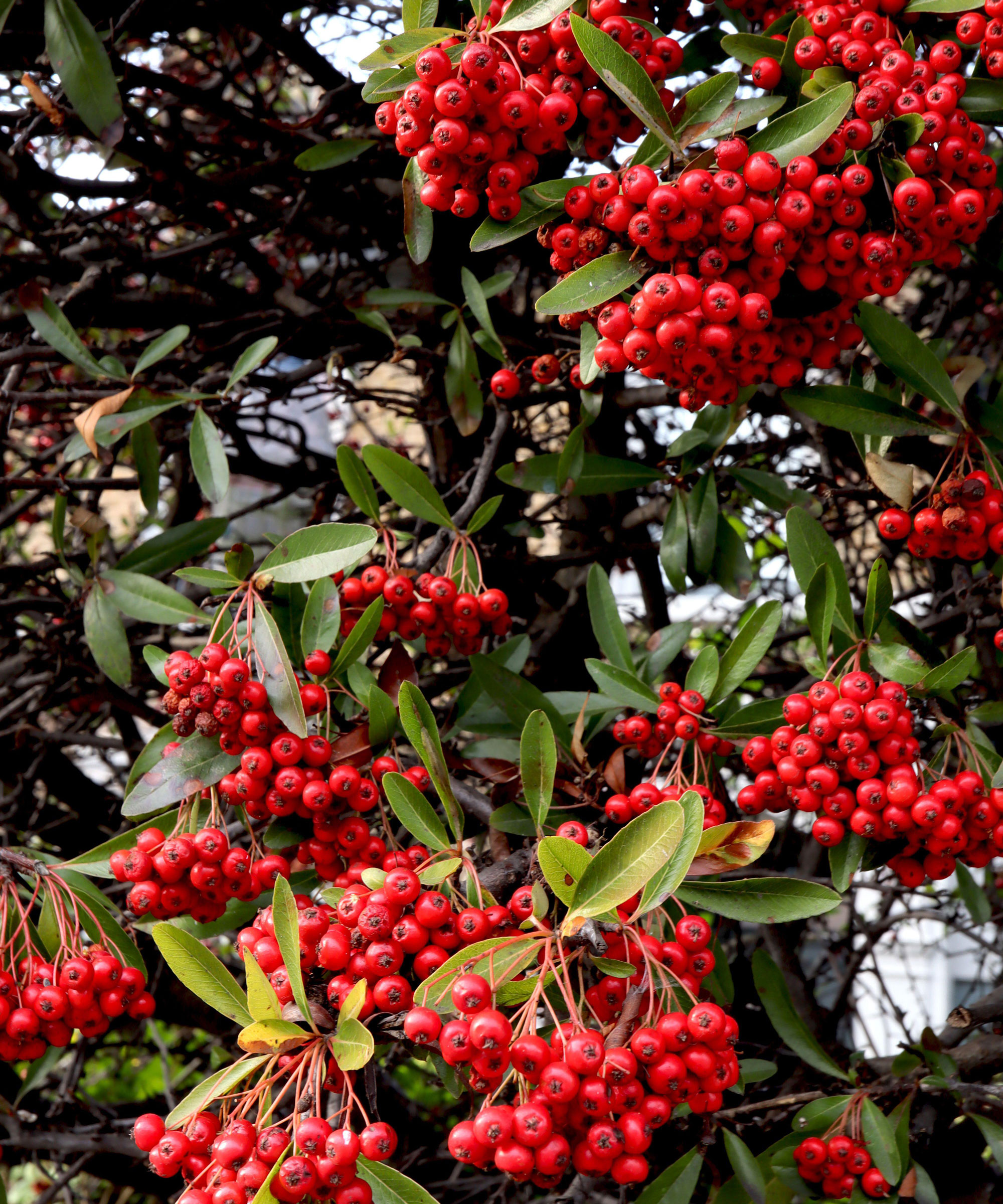
According to plant expert Mike McGroarty, owner of Mike’s Backyard Nursery, the best place to start when trying to improve your urban balcony or patio is with a plant you can train to a trellis or as an espalier. His first pick? Pyracantha, otherwise known as Firethorns. It's also the best shrub for winter berries — a dream if you ask me!
"Many Pyracantha varieties are often grown as espaliers. I like this option because it’s a means of training a plant to grow flat and wide," says expert Mike. Don’t let this plant’s notoriously prickly nature put you off though, expert Mike has a great workaround. "Pyracantha is very pretty when covered with red or orange berries, but they are also very prickly to work with. But a newer variety, 'Orange Star' is said to be completely thornless. You can buy a trellis to train them to or custom build one for your situation."
The best part of Pyracantha? It’s evergreen! "Pyracantha will provide you with year-round privacy," says expert Mike. "Though 'Orange Star' might be difficult to find, but there are lots of other Pyracanthas that will work. These plants are hardy to zone 5, and do great on a balcony or patio in full sun to partial shade."
Price: $58.99
Was: $154.99
This vivid red and green color Pyracantha is a hardy evergreen plant, ideal for privacy and screening.
2. Climbing Hydrangea
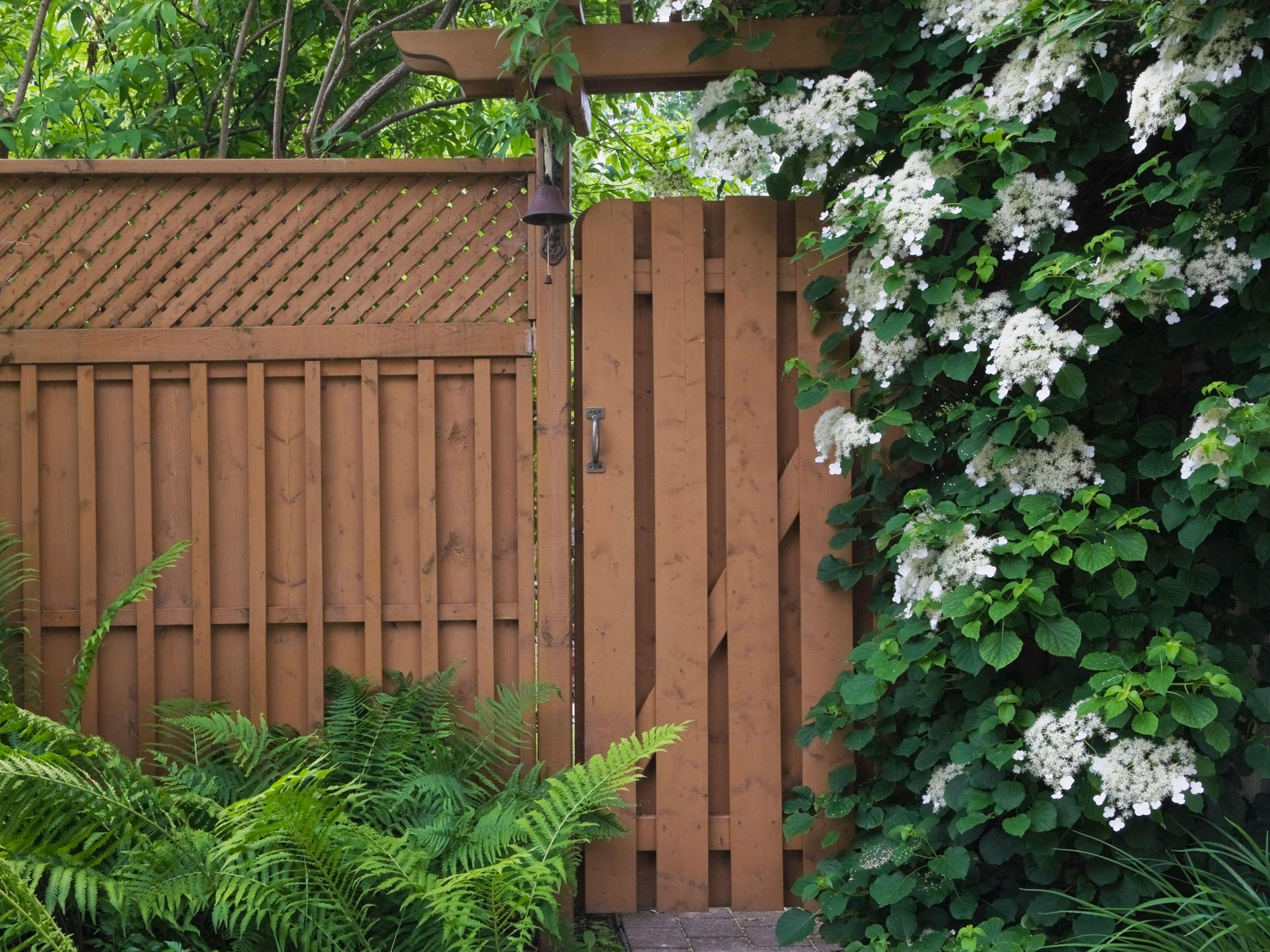
When we say hydrangea, you’re probably thinking of a large bushy shrub with elegant domed flowers, right? Although those gorgeous shrubs are great for containers, height isn’t all of their forte. For their climbing cousin variety, though, it absolutely is. Plus, it’s a favorite container gardening privacy plant for gardening expert Mike and if you want to mix things up, these beauties make for great climbing plants for the front of your house.
"This is another plant that can be easily trained to a trellis and will completely fill in and cover the trellis, providing a great deal of privacy," says expert Mike. "Like Pyracantha it should be pretty happy in a container for a long time. They bloom like crazy with a sea of white blooms, but it does take them at least a couple of years before they really start blooming."
As the name suggests, hydrangeas are water lovers and keeping them well watered is especially important for container-grown plants. To keep on top of your watering, Mike is a big advocate for drip irrigation systems. He says "Adding drip irrigation means your containers get a predetermined amount of water each day. Drip irrigation is pretty easy to do too. All you need is a battery-operated hose end timer and some simple drip tubing and emitters. All of which are readily available at home improvement stores."
Price: $32.99
Size: 4 Inch
These blooms come in a 4-inch pot. The flowers are 5-inch flat-topped inflorescences that carry showy blooms.
3. Morning Light Maiden Grass
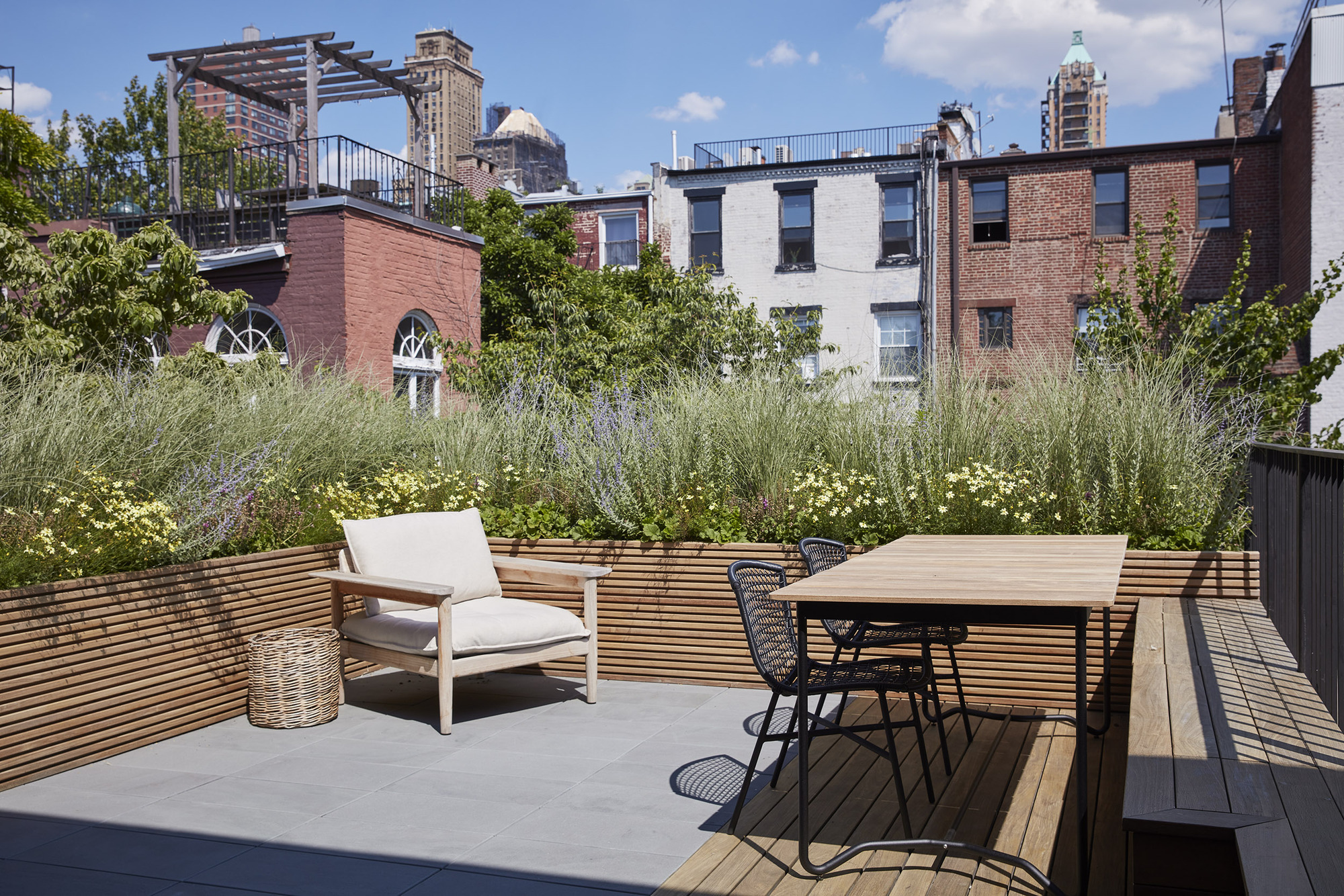
It’s official, the best ornamental grasses for privacy are in their Renaissance era! Traditionally considered old-fashioned – think 1970s pampas grass – these grasses are truly coming into their own and becoming a super-trend in modern garden design. Gone are the days of a singular statement ornamental grass in the middle of a lawn. This time, designers are choosing to intersperse these grasses within perennial garden beds and using them to add height and romantic movement throughout the seasons. Plus, with their all-round excellent drought resistance and the world's increasingly challenging weather conditions, it’s not hard to see why these dreamy plants are making a comeback.
The best part about these grasses? They do just great in containers, making them perfect for plugging gaps in fencing. "This ornamental grass [Morning Light Maiden Grass] is one of my all time favorite grasses," says plant expert Mike. "The foliage is fine textured but variegated green and white. Because the foliage is so finely textured even the slightest breeze will have it swaying in the wind. It blooms in the late summer with plumes that are very attractive and feathery, not too big either – reaching 5-6ft. It will do great when planted in full sun to light shade in zones 5-9."
Just be sure to get your compost mix right when planting your ornamental grasses though. These plants like a well-draining soil and won’t tolerate being left in water-logged pots. Incorporating a nice amount of horticultural grit or pearlite into your compost before planting is a great way of ensuring your grass won’t sit in water – aim for a 3:1 ratio of compost to grit.
Plus, as Mike highlights, these plants can easily be adapted to container growing. "The nice thing about a grass like this is that if it gets too big, too full for your container you can remove it from the container and divide the root ball. But it’s not easy to do and you might have to use something like a reciprocating saw to divide the root ball in quarters."
Price: $34.46
Size: 3 Gallon
This Premier Plant Solutions 10118 Miscanthus Maiden Grass from Amazon comes in a 3-gallon pot and is ideal for patio or lawn needs.
4. Fragrant Viburnum
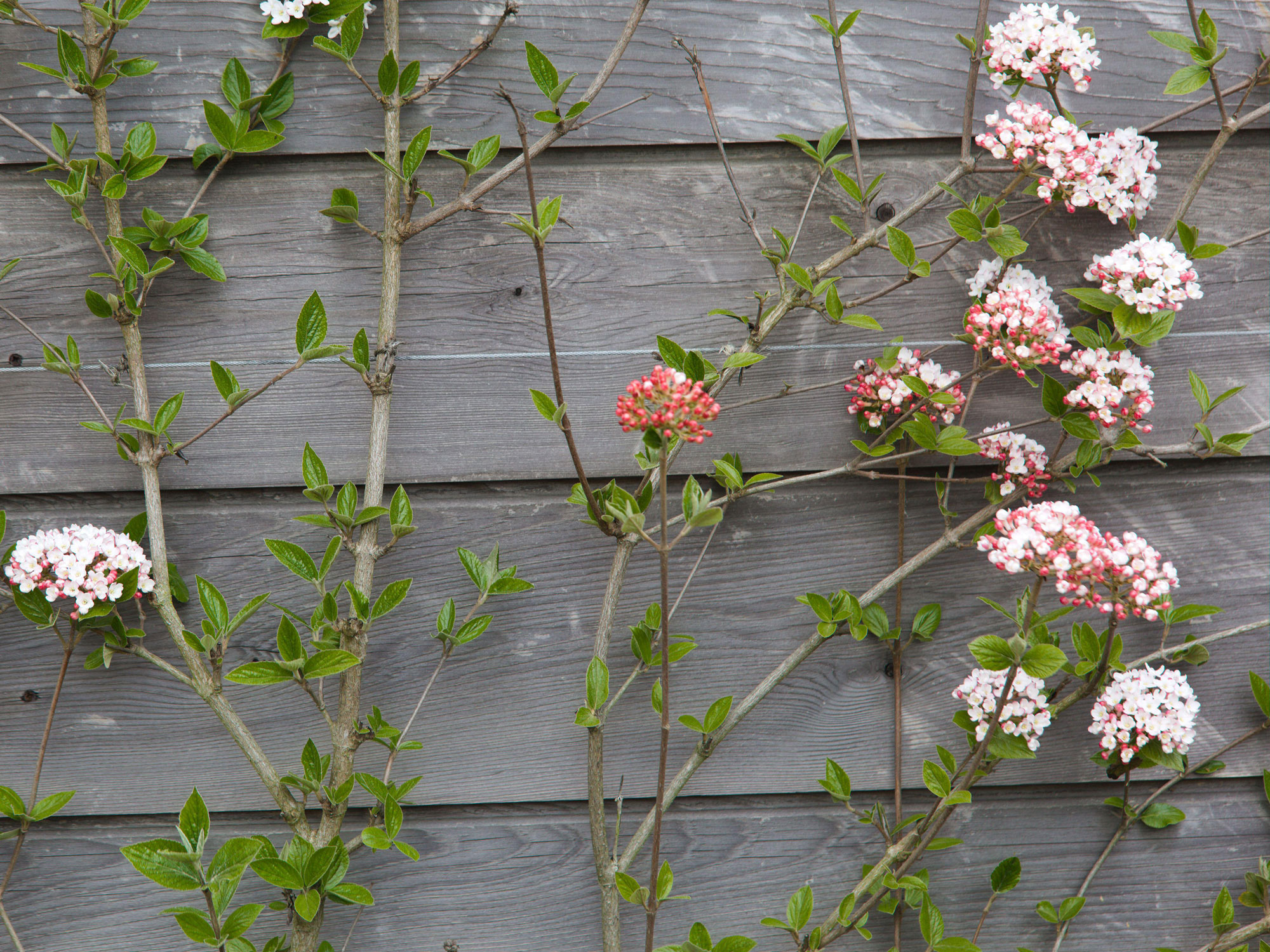
Just because your balcony or patio is on the smaller side doesn’t mean you have to miss out on those iconic spring blossoms. With container-loving plants like fragrant viburnum available, Mike thinks achieving a fragrance-filled private yard is for everyone! If you're yard is more narrow and you're working with a fence, this scented climber also makes for the best plant to cover a fence. It's a win-win.
"There are a number of fragrant viburnums available. It seems that the old standards of Viburnum Carlesii or Carlcephalum are by far the most fragrant of them all. Viburnum Juddii is probably the next best option," explains plant expert Mike. "If you started with a relatively young plant, I’m sure you could train them to trellis. I keep returning to the idea of training things as espalier because you can make them really wide in one direction and really narrow in another, which would be ideal for both privacy and saving space. Most viburnum do well in full sun or partial shade, and all three of these Viburnums should be hardy to zone 5."
Viburnums do best in humus-rich soil, so making sure your container’s compost composition is right is essential for optimum growth. According to Mike, "Your potting mix should be well-drained, especially if you are watering the containers daily and in most situations, you really need to. Many store-bought potting mixes contain a lot of peat moss, which isn’t ideal for an outdoor environment. When it dries out, it gets hard and is difficult to re-wet, and when wet, it can stay soggy. Adding more perlite or a soil conditioner that is mostly pine fines would help a great deal!"
Price: $54.99
Size: 3 Gallon
This Korean Spice Viburnum from Amazon prefers partial shade to moist-well drained soil and makes for the perfect patio plant.
5. Dwarf Apple Trees
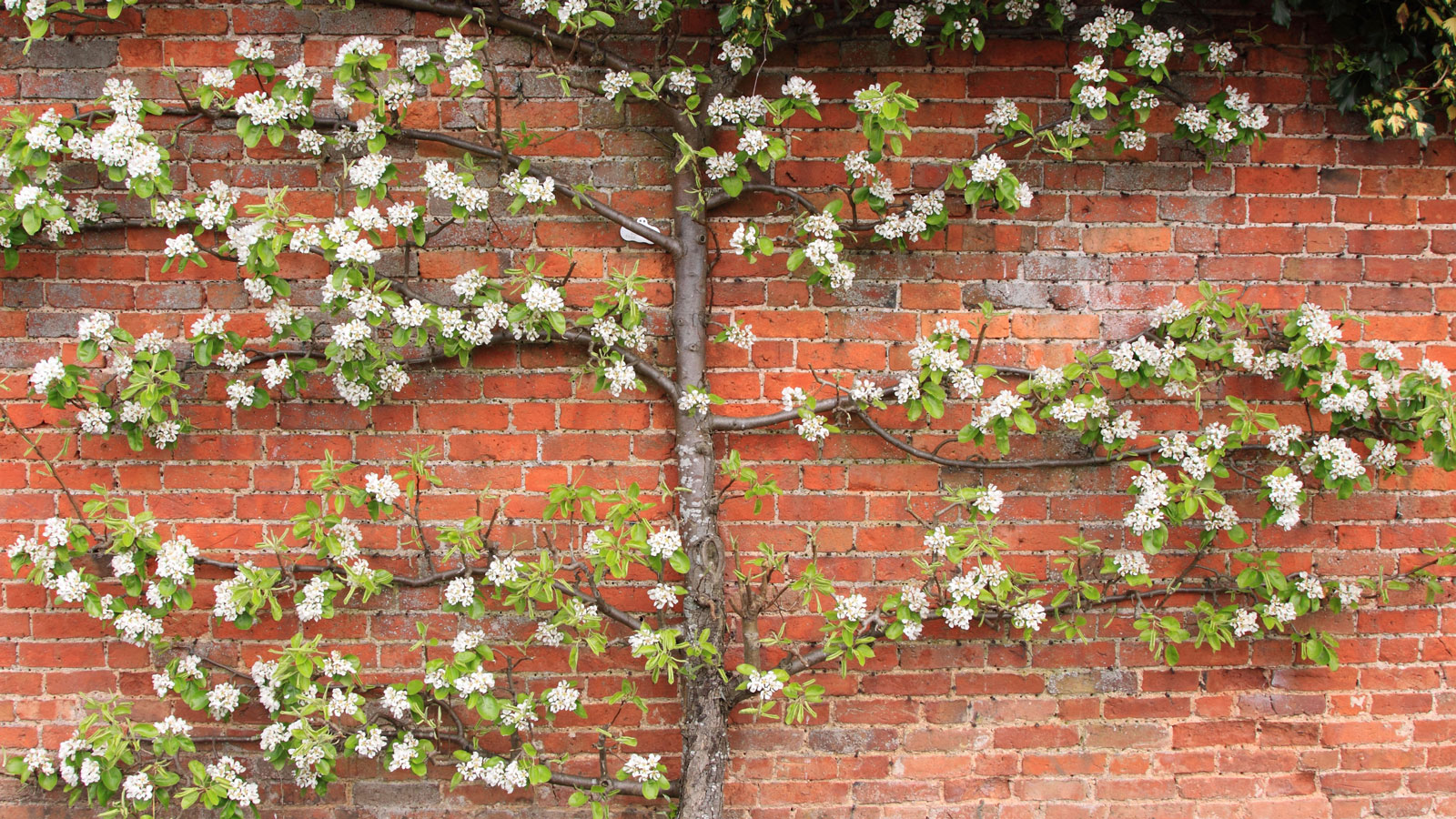
"I know this sounds a little crazy but dwarf apple trees are often grown espalier and with some pruning you should be able to maintain them in a small space, plus you get the benefit of delicious apples" says expert Mike. What could be more satisfying than growing your own harvest from a dwarf tree?
According to gardener Mike, the key is good fruit-harvesting practices. "Apples are not that difficult to grow, but it’s important to note that apple trees make a ton of flowers, which turn into fruit. It’s best to remove some of the small apples before they mature so that you get really nice apples and not hundreds of tiny, not-so-good apples."
To harvest like a true pro, Mike advises getting picky with your chosen fruits and remembering to thin them out when they are still small. "When the apples get about as big as a marble, that’s when you need to thin your tree. You should have a space of about 4-6 inches between apples on any given branch when you are done thinning."
When it comes to the right equipment for the job, we’d thoroughly recommend a good pair of sharp Japanese bypass secateurs for pruning, as well as fruit snips when it comes to harvest time. Though the fruit snips may seem obsolete when you have secateurs, the thinner snip blades will drastically reduce the chances of you cutting into the apples or damaging the stalk when it comes to harvest. Apples that are blemish-free and stored in a large, cool, but humid room can last for several weeks after harvest, so it pays to be careful!
Price: $109.95
Was: $159.95
Size: 2-3 feet
This Columnar Apple Tree can grow up to 8-10 feet tall and spread 2 ft in width. As well as being a great patio plant, it makes for a perfect snack!
6. Phantom Hydrangea
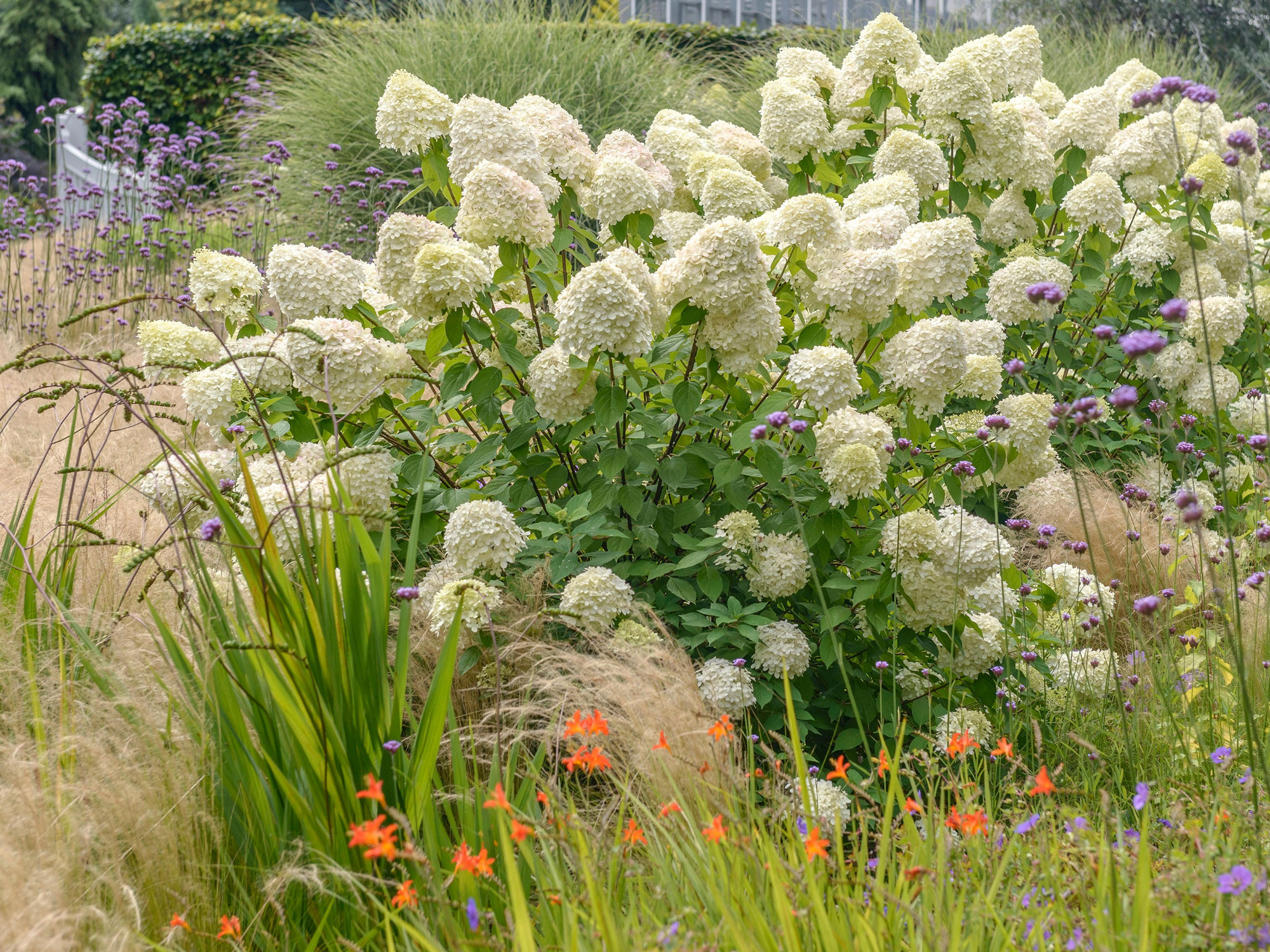
We’ve covered climbing hydrangeas, but if you want a tall statement shrub that will reinforce fence privacy while still giving beautiful blooms, Hydrangea paniculata 'Phantom' is the shrub for you!
"Phantom Hydrangea is a bigger hydrangea, growing to a height of 6 foot tall or higher. But they also respond really well to heavy pruning in the fall or spring," says expert Mike. "Plus, because they are in the Paniculata family of hydrangeas they always bloom! None of that hit and miss flowering that you get with some Macrophylla hydrangeas. These things always bloom and the flowers are as big as your head. Seriously!"
"The flowers start out creamy white and turn soft pink over a period of a few weeks. They bloom in the fall. You can cut them back as much as you want in the late fall or early spring. I cut mine back to about 18 inches and by mid summer they are 5 to 6 foot tall then the growth slows down and they start making flowers on current season growth. They love full sun, maybe a little shade and should be hardy in zones 4-8."
As hydrangea paniculata blooms on new wood, this means you can utilise those blooms for your own flower arrangements as well! Pick them when they’re bright white for long-lasting fresh flowers, then when it comes to fall, once the flowers have dried slightly and feel like paper, pick a few stems and place them straight into an empty vase and you’ve got a flower display that will last all year long. Before you do this, ensure you understand how to take care of hydrangeas in a vase in order to have long-lasting, healthy blooms.







